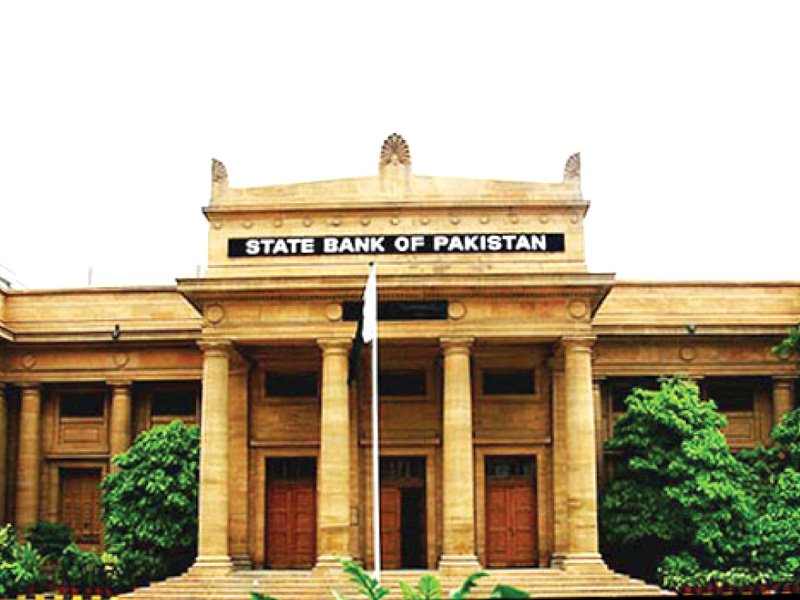KARACHI – The State Bank of Pakistan (SBP) on Monday decided to keep the policy rate unchanged at 22 per cent.
In the meeting, the Monetary Policy Committee (MPC) noted that headline inflation rose in September 2023 as expected.
However, it is projected to decline in October and then maintain a downward trajectory, especially in the second half of the fiscal year.
While the recent volatility in global oil prices as well as the increase in gas tariffs from November 2023 pose some risks to the FY24 outlook for inflation and the current account, the Committee noted some offsetting factors. These include the targeted fiscal consolidation in Q1; improvement in market availability of key commodities; and the alignment of interbank and open market exchange rates.
The MPC noted key developments since its September meeting. First, the initial estimates for Kharif crops are encouraging and will have positive effects on other key sectors of the economy.
Second, the current account deficit narrowed considerably in August and September, which helped to stabilize the SBP’s FX reserves position amidst tepid external financing in these two months.
Third, fiscal consolidation remained on track, with both fiscal and primary balances improving during Q1-FY24.
Fourth, while core inflation remains sticky, inflation expectations of both consumers and businesses improved in the latest pulse surveys.
However, global oil prices remain quite volatile and the conflict in the Middle East makes its outlook even more uncertain.
In the light of these developments, the MPC emphasized on continuing with the tight monetary policy stance.
The MPC reiterated its earlier view that the real policy rate is significantly positive on 12-month forward-looking basis and is appropriate to bring inflation down to the medium-term target of 5-7 per cent by end-FY25.
However, the MPC noted that this outlook is based on continued fiscal consolidation and timely realization of planned external inflows.
The latest production estimates of major Kharif crops show considerable increase compared to last year. These improved crop output estimates are supported by higher fertilizer off-take and better availability of water.
Also, moderate recovery in other key activity indicators like cement, POL and auto sales is gaining traction.
Moreover, large-scale manufacturing (LSM) output has indicated a gradual improvement in the first two months of this year, with major contribution coming from domestic-oriented sectors.
The MPC noted a substantial improvement in the current account balance, as the deficit narrowed over 58 per cent y/y to $947 million in Jul-Sep FY24, while almost leveling out in September 2023.
Both exports and workers’ remittances improved in September over the preceding two months.
The reforms related to exchange companies introduced in early September, coupled with administrative actions against illicit market activities, also helped improve FX market sentiments and liquidity.
The improved inflows in the interbank market helped stabilize the SBP’s FX reserves around $7.5 billion as of October 20, amidst tepid official inflows during August and September. Nonetheless, the MPC noted that a successful and timely completion of the upcoming IMF-SBA review would help unlock other multilateral and bilateral financing.
In Q1-FY24, fiscal indicators improved compared to first quarter of the last fiscal year. Specifically, the fiscal deficit improved to 0.9 percent of GDP from 1.0 percent and the primary balance posted a surplus of 0.4 percent, compared with 0.2 percent last year.
This improvement reflects both better revenue collection and restrained spending. FBR’s revenue recorded 24.9 per cent growth over the same period last year.
Similarly, non-tax revenues almost doubled mainly due to a sharp rate-driven increase in PDL collection. At the same time, total expenditures remained at last year’s level, supported by a considerable reduction in subsidies and grants. The MPC noted that continued fiscal prudence and meeting the targeted fiscal consolidation is imperative for keeping inflation on downward trajectory.
The broad money (M2) growth decelerated to 12.9 per cent as of end-September from 14.2 per cent at end-June 2023.
Similarly, the reserve money growth has slowed down from June, which is primarily explained by significant deceleration in the growth of currency in circulation.
The MPC noted that since June, the Net Foreign Assets (NFA) of SBP and the banking system expanded owing mainly to significant FX inflows in July, while Net Domestic Assets (NDA) contracted, leading to an improvement in the composition of both M2 and reserve money. It is also expected that the planned fiscal consolidation and realization of expected external inflows will create space for credit to private sector and also improve the NFA of the banking system.
As anticipated, headline inflation surged to 31.4 percent y/y in September. The MPC expects inflation to decline significantly in October, owing to downward adjustments in fuel prices, easing prices of some major food commodities, and a favorable base effect.
The Committee also reaffirmed its earlier assessment that inflation will decline substantially from the second half of FY24, barring any major adverse developments.










